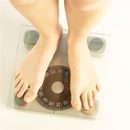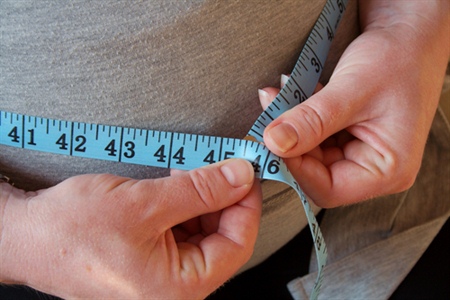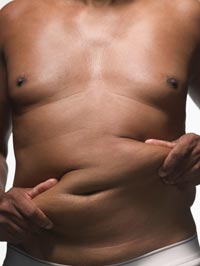Could Everyone Be Wrong?
My friend T.M. was on a roll, so I just listened.
“Everyone everywhere still thinks cardio is necessary.
“I go to hotel fitness centers and big gyms all across the country and the cardio sections are bigger than they were 10 years ago! And now they added other things. Like ‘spinning.’ Did you know some of those classes last 90 minutes? No thanks.”
T.M. has been a big proponent of my anti-aging PACE fitness system for 10 years. He’s the CEO of a large company, and his work takes him everywhere. He likes to check out the local fitness facilities and do his workouts there so he can talk to people about PACE.
He says PACE is keeping him young, and it shows. When I met him for lunch this past weekend he looked better than he did 10 years ago.
T.M. has this great energy. I felt it right away when he walked in the room. I’ve found that’s very common for people doing PACE. “Gives me a leg up on my buddies, too,” he told me.
Most of his friends are very successful businessmen and heads of companies themselves. They all do long cardio workouts. And just between you and me, I won’t mention any names, but he tells me they look much older than they are.
T.M. said looking at how cardio ages you, then looking at the benefits of PACE should make people wonder, “Could everyone be wrong about cardio?”
This is why I talk so often about P.A.C.E. I want to help you avoid the cardio mistake that even the most successful people have been caught up in.
Cardio and endurance exercise can do some things for you. But they don’t do for you what your heart and lungs need most for optimal health. They can’t give you power.
If you want endurance, there’s some use for that, and you can add it to your workouts after you’ve built back your power. You don’t want to do it before that, and you don’t want to do it every day … unless what you want is to give up your power and replace it with endurance.
To regain your power, shorten the duration of the exertion, progressively increase the challenge, and focus on the recovery time and you’ll stay young and radiate health like T.M.
Let me show you what I mean.
Have a look at this new study I just read. It’s about to be published in the December issue of the International Journal of Clinical Practice.
Researchers at the University of Palermo in Italy asked 176 people to walk every day. Now, there’s nothing special about that. But here’s the reason the study caught my eye. They were asked to walk at a speed just a bit faster than what was “comfortable” for them.
Why is that important?
Well, if you remember, PACE stands for Progressively Accelerating Cardiopulmonary Exertion. So even though the study wasn’t about PACE, the people were asked to use progressivity. To increase the challenge to their bodies over what they were used to.
That makes the results an important example of the good things that can happen even if you just apply one aspect of PACE.
So what happened? At the end of the study, the people on average had a:
- Decreased body mass (from 31.59 to 29.23)
- Smaller waist (dropped 2 inches)
- Lower blood sugar (dropped 5 1/2 points)
- Higher HDL cholesterol (up 3.6 points)
- Reduced c-reactive protein (a marker of heart inflammation) by almost 50%!1
That’s just the average. Also, these weren’t the results from 90-minute extreme cardio workouts. All they did was walk 5 days a week and just do a little bit more than what they were used to. The results would have been even better if they had tested with PACE.
In my own PACE Study Group, people who did my PACE Express program had an average:
- 4 point drop in their systolic blood pressure
- loss of 24.7 total inches
- 10% drop in body fat
- fat loss of 25.4 pounds
These numbers started to go down right away as soon as they started PACE, especially blood pressure, and it proceeded through the entire study.
Some of the people got a much more dramatic drop. D.S.’s systolic pressure dropped 16 points after the second month. J.S. dropped her diastolic pressure 20 points. Karen W. lost 48 pounds and 36 total inches. And there are dozens more like her.
The great thing about PACE is that you can use any kind of exertion to do it. Take spinning. Spinning can be good if you do it for 20 minutes, with challenging peaks. And you use focused rest and recovery in between.
Or how about swimming laps? Try this: Instead of focusing on how many laps, turn the focus to progressivity.
- First, just swim a few laps for each of three sets. Swim the first laps a bit faster than you normally do. Then rest until your heart rate returns to normal.
- Then swim the next set just a bit faster. Now rest again but make the rest a tiny bit shorter. And instead of merely resting, participate in the process by calming your mind and imagining your heart rate slowing down.
- Then swim another few laps. For this set, either go a tiny bit faster than the last set, or swim just a couple more laps.
Congratulations, you just did PACE. You progressively increased the challenge, accelerated the rest period, and exerted your heart and lungs for power, not endurance … and reversed years of aging.
A leaner, smaller waist, higher HDL, better heart health … with no cardio or hours of spinning.
You can try PACE at home using any physical exertion you want. Even walking.
To Your Good Health,
![]()
Al Sears, MD
1. Di Raimondo D, Tuttolomondo A, Buttà C, Casuccio A, Giarrusso L, Miceli G, Licata G, Pinto A. “Metabolic and anti-inflammatory effects of a home-based program of … physical exercise.” Int J Clin Pract. 2013 Dec;67(12):1247-53.
-
How to eat more than you burn (without gaining weight)
It almost sounds unbelievable, but science has found a way to eat mor
-
South Beach Diet, Does It Work?
Everyone has heard of the South Beach Diet. Created by a cardiologist,
-
Dr. Oz Dishes on Weight Loss, From Fasting Facts to Detox Diets
Now in the fifth season of his popular talk show, heart surgeon turned
-
Cost Of Weight Loss Program
When you look critically in today’s world you are going to di
-
Body Detox for Body and Brain
There are three food kinds which a person need to consume every day in
-
Effective Weight Loss Using Proactol
Increased weight may seem a problem to you, but more than that, diseas
- DON'T MISS
- Weight Loss Tips You’ll Wish You’d Heard Sooner
- Slim Down Your Belly
- Maintain A Clean Liver With These Simple Fat Loss Hints
- Accessories Needed For Weightlifting
- The Hierarchy Of Fat Loss. Here’s What You Need To Know
- Childhood Obesity Begins Early
- You Can Make Simple Changes To Become Fit
- How To Have Natural Weight Loss Quick
- Building a Team to Aid Your Weight Reduction Goals
- How To Eliminate Weight In Two Weeks – For Good!




